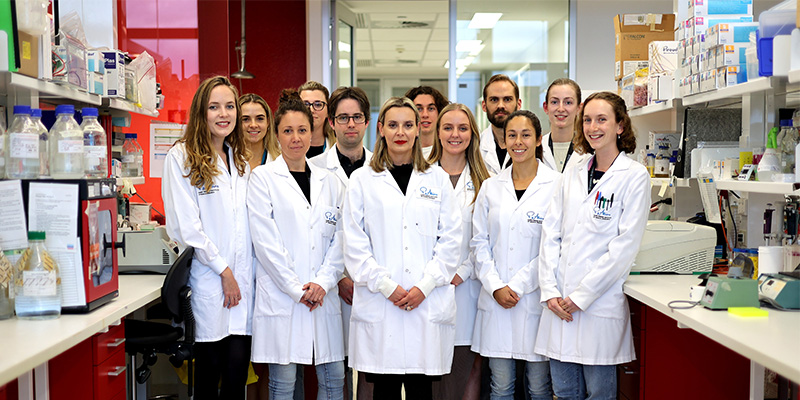Search
Research
Cancer Cell Biology Research in an Indigenous Childhood Cancer ContextIn Australia, cancer medicine is increasingly guided by our expanding knowledge of cancer genomics (the study of genetic information) and biology. Personalized treatments and targets are often defined by an individual’s genetic profile—known as precision cancer medicine. The translation of genomics-guided precision therapeutics from bench to bedside is beginning to produce real clinical benefits for Australians living with cancer.
Research
Type-2 diabetes epigenetic biomarkers: present status and future directions for global and Indigenous healthType-2 diabetes is a systemic condition with rising global prevalence, disproportionately affecting Indigenous communities worldwide. Recent advances in epigenomics methods, particularly in DNA methylation detection, have enabled the discovery of associations between epigenetic changes and Type-2 diabetes. In this review, we summarise DNA methylation profiling methods, and discuss how these technologies can facilitate the discovery of epigenomic biomarkers for Type-2 diabetes.
Research
A corpus of GA4GH phenopackets: Case-level phenotyping for genomic diagnostics and discoveryThe Global Alliance for Genomics and Health (GA4GH) Phenopacket Schema was released in 2022 and approved by ISO as a standard for sharing clinical and genomic information about an individual, including phenotypic descriptions, numerical measurements, genetic information, diagnoses, and treatments. A phenopacket can be used as an input file for software that supports phenotype-driven genomic diagnostics and for algorithms that facilitate patient classification and stratification for identifying new diseases and treatments.
Research
A multitiered analysis platform for genome sequencing: Design and initial findings of the Australian Genomics Cardiovascular Disorders FlagshipThe Australian Genomics Cardiovascular Disorders Flagship was a national multidisciplinary collaboration. It aimed to investigate the feasibility of genome sequencing and functional genomics to resolve variants of uncertain significance in the clinical management of patients and families with cardiomyopathies, primary arrhythmias, and congenital heart disease.
Research
More than dirt: Sedimentary ancient DNA and Indigenous AustraliaThe rise of sedimentary ancient DNA (sedaDNA) studies has opened new possibilities for studying past environments. This groundbreaking area of genomics uses sediments to identify organisms, even in cases where macroscopic remains no longer exist. Managing this substrate in Indigenous Australian contexts, however, requires special considerations. Sediments and soils are often considered as waste by-products during archaeological and paleontological excavations and are not typically regulated by the same ethics guidelines utilised in mainstream 'western' research paradigms.



News & Events
Prestigious fellowship for pioneering researcherAleksandra Filipovska has been elected a Fellow of the Australian Academy of Health and Medical Sciences.
Research
Longitudinal Profiling of the Human Milk Microbiome from Birth to 12 Months Reveals Overall Stability and Selective Taxa-Level VariationHuman milk bacteria contribute to gut microbiome establishment in breastfed infants. Although breastfeeding is recommended throughout infancy, temporal variation in the milk microbiome-particularly beyond solid food introduction-remains understudied. We analyzed 539 milk samples from 83 mother-infant dyads between 1 week and 12 months postpartum using full-length 16S rRNA gene sequencing.
Research
Consultation informs strategies for improving the use of functional evidence in variant classificationWhen investigating whether a variant identified by diagnostic genetic testing is causal for disease, applied genetics professionals evaluate all available evidence to assign a clinical classification. Functional assays of higher and higher throughput are increasingly being generated and, when appropriate, can provide strong functional evidence for or against pathogenicity in variant classification. Despite functional assay data representing unprecedented value for genomic diagnostics, challenges remain around the application of functional evidence in variant curation.
